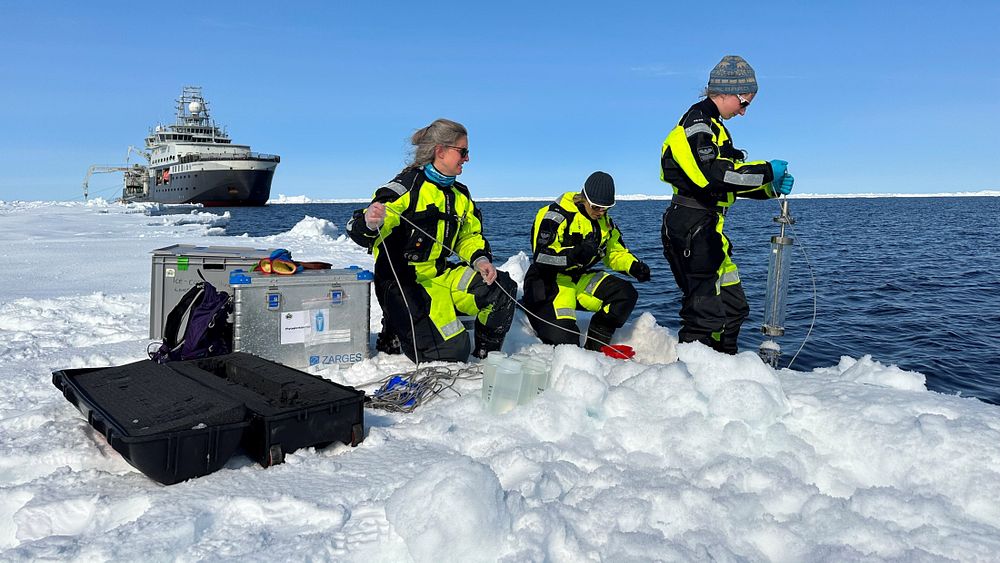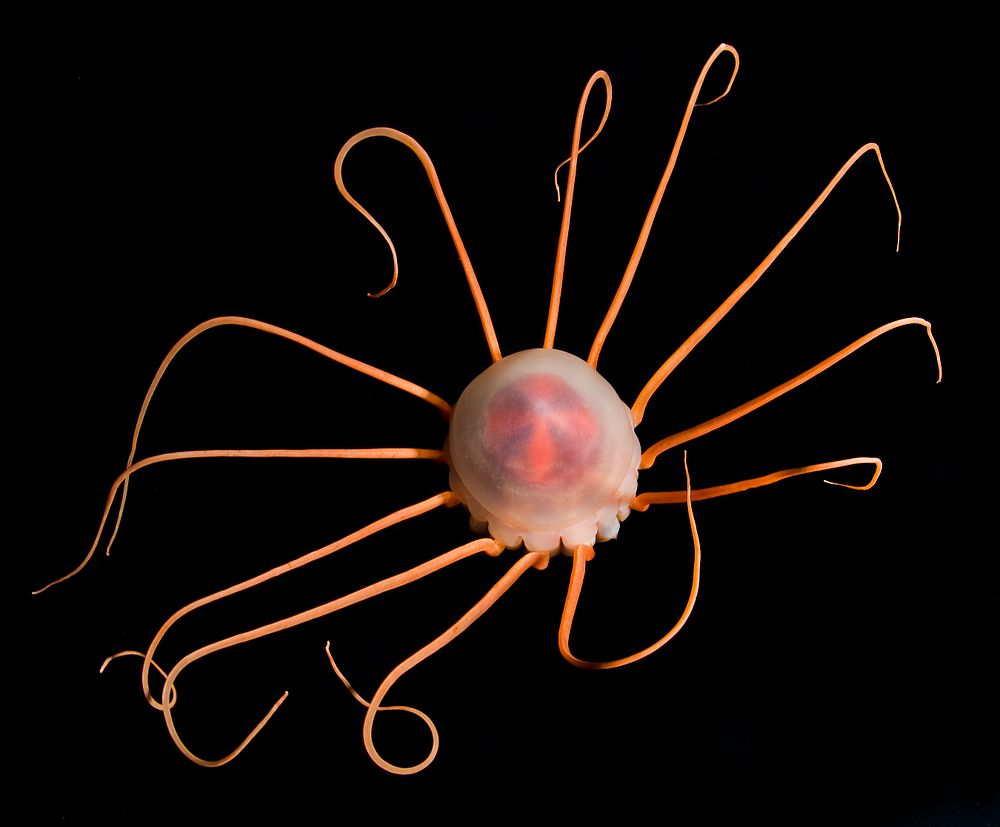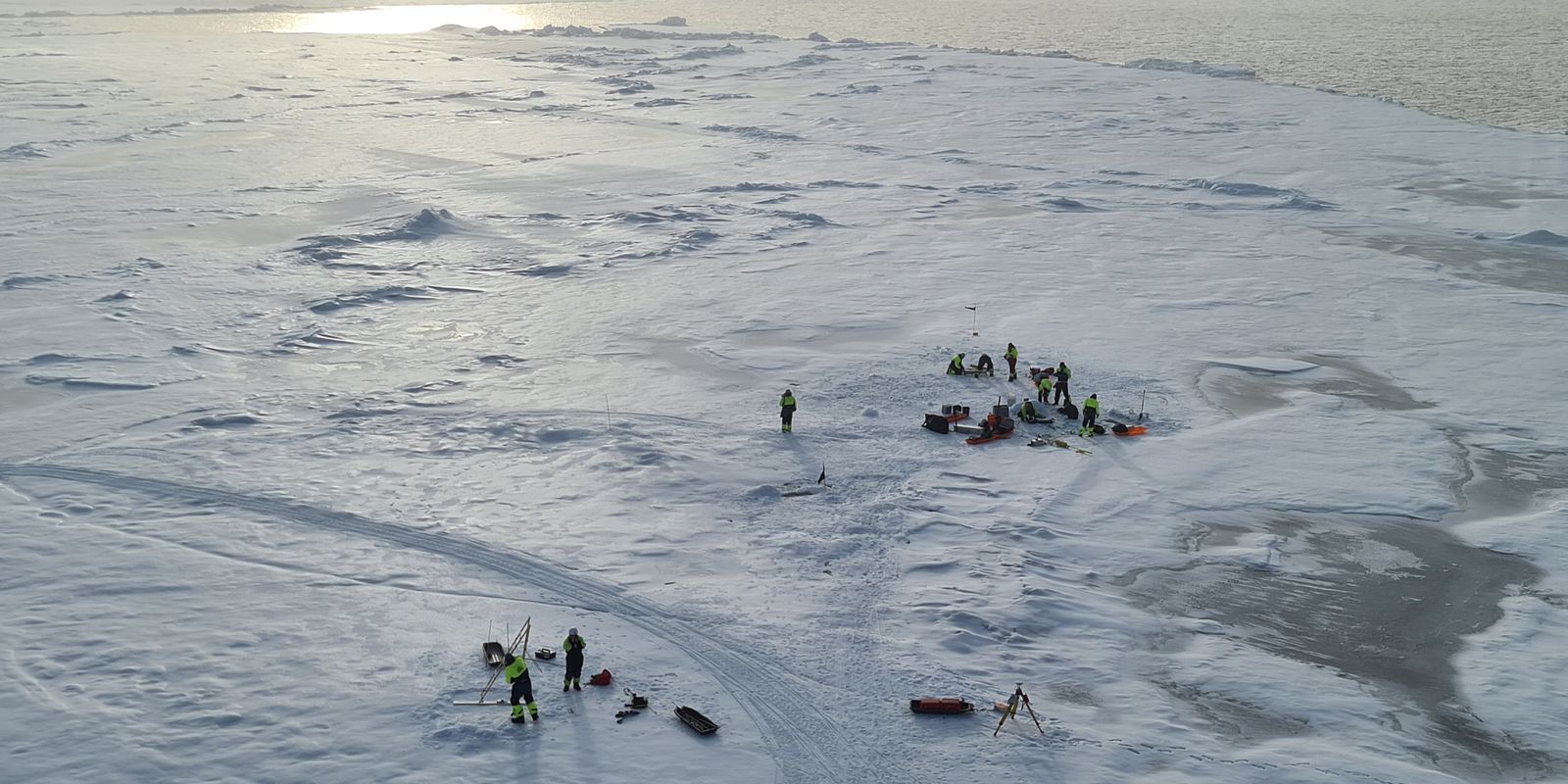28 March 2025 news
Long cold winters, thick year-round sea-ice, and great distances from major logistics centers have kept many secrets regarding the status and processes of the central Arctic Ocean ecosystem. Occasional research cruises, remote sensing technology, models, and our imagination provided the basis for our understanding through the end of the 20th century. Longer navigation seasons due to reduced sea-ice cover in recent years, however, have led to more frequent investigations, but now we are in a race to understand how this ocean functions – before the rapid changes taking place here change it forever.
With this in mind, the Nansen Legacy project conducted a multi-disciplinary study of the Nansen and Amundsen Basins of the Arctic Ocean, those basins directly north of and nearest the Svalbard archipelago. With the icebreaker RV Kronprins Haakonas as a base of operations, researchers sampled along a transect from the shelf break northward to 87.5 ˚N latitude. The resulting study detailing physico-chemical properties and composition and functioning of ice, pelagic, and seafloor biota has recently been synthesized and published in the journal Elementa: Science of the Anthropocene.
'We observed distinct differences in sea ice and hydrography resulting in basin-specific compositions of chemical and biological parameters. The Nansen Basin was, among others, characterized by a stronger influence of warmer Atlantic Water and exhibited higher biological stocks, whereas in the Amundsen Basin, under the influence of the Transpolar Drift, was characterised by generally low faunal abundances,' summarized Doreen Kohlbach, Researcher at the Alfred-Wegener-Institut for Polar and Marine Science and lead author on the paper. That the Amundsen and northern Nansen Basins retained their Arctic character, suggested that this synthesis captured many of the historical conditions of the region. The southern Nansen Basin, under the influence of northward flowing Atlantic Water through the Fram Strait, was warmer, more productive, and showed signs of more southern species extending their distributional ranges into the Arctic.

Photo: Ann Kristin Balto
Sanna Majaneva, Researcher at Akvaplan-niva and co-author on the study, studied gelatinous zooplankton from the cruise. 'The observations of the deep-water jellyfish Periphylla periphylla were intriguing, as its distribution has been speculated to be expanding northward. However, similarly to Periphylla periphylla, many gelatinous species remain understudied, and their distributions are largely unknown. Therefore, a more extensive study is essential to accurately determine their current distribution patterns and potential shifts,' noted Majaneva.

Periphylla periphylla (Photo: Erling Svensen)
'Our study strongly contributes to knowledge on ecosystem status of the different basins, which is key for the development of sustainable management and conservation strategies in the high-Arctic,' says Kohlbach. Furthermore, it is part of the context needed for development of the new Norwegian research project Arctic Ocean 2050 (Polhavet 2050). The Arctic will experience considerable change over the coming decades and this baseline in critical for understanding these changes.
Link to publication: https://online.ucpress.edu/elementa/article/13/1/00016/207801/Nansen-and-Amundsen-basins-Gradients-of-physico
More about the Nansen Legacy project: https://arvenetternansen.com/



